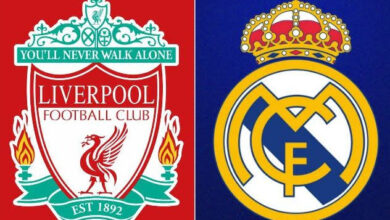Carragher picks out two Liverpool stars who demonstrated Reds’ major weakness vs Palace

The opening weeks of any football season often provide the most telling indicators of what lies ahead, and Liverpool’s recent pre-season performances have painted a picture that is both encouraging and deeply concerning in equal measure. While the Reds have demonstrated their attacking prowess with flowing, incisive football that has thrilled supporters and neutrals alike, a persistent defensive vulnerability has emerged as a recurring theme that threatens to undermine their ambitions for the upcoming campaign
The penalty shootout defeat to Crystal Palace served as perhaps the most crystalline example of Liverpool’s current tactical predicament. Throughout the match, Liverpool’s forward play was characterized by the kind of dynamic, high-tempo football that has become synonymous with their recent success. Wave after wave of attacks crashed against Palace’s defensive structure, with Liverpool’s front line combining with the fluidity and understanding that suggests their attacking chemistry remains largely intact despite the changes in personnel and tactical adjustments that have marked their recent evolution.
However, it was not Liverpool’s attacking display that dominated post-match analysis, but rather the alarming frequency with which they found themselves exposed to Palace’s counter-attacking threats. Time and again, Liverpool’s aggressive forward positioning left them susceptible to rapid transitions, with Palace exploiting the spaces vacated by Liverpool’s marauding full-backs and advanced midfielders. The pattern was as predictable as it was concerning: Liverpool would commit numbers forward in search of the breakthrough goal, only to find themselves scrambling back as Palace launched swift counter-attacks that carved through their temporarily disorganized defensive structure.
This tactical vulnerability was not merely an isolated incident confined to one match, but rather the latest manifestation of a defensive fragility that has characterized Liverpool’s entire pre-season campaign. The penalty shootout defeat to Palace was significant not just for its immediate impact, but for what it revealed about Liverpool’s current tactical approach and the potential consequences that may follow if these issues remain unaddressed.
Jamie Carragher’s post-match assessment on social media provided a particularly insightful perspective on Liverpool’s current predicament, drawing upon his extensive experience as both a Liverpool defender and astute tactical analyst. His observation that Liverpool looked “great going forward but susceptible defensively” encapsulated the fundamental contradiction that has defined their pre-season performances. As someone who spent his entire playing career mastering the art of defensive organization and understanding the intricacies of maintaining tactical discipline, Carragher’s concerns carry particular weight.
The former Liverpool stalwart’s identification of the specific tactical issue at the heart of Liverpool’s defensive problems was particularly illuminating. His analysis that “a lot of the goals conceded by LFC have come from going man to man really aggressively and leaving space in behind” highlighted a fundamental tactical imbalance that has become increasingly apparent throughout their pre-season fixtures. This assessment reveals a team that has perhaps become overly committed to their aggressive, high-pressing style without adequately considering the defensive consequences of such an approach.
Carragher’s warning that this could become “a theme this season unless they improve” represents more than just casual observation; it constitutes a genuine tactical concern that could have profound implications for Liverpool’s competitive prospects. His analysis suggests that the defensive issues are not merely the result of pre-season rustiness or individual errors, but rather stem from systematic tactical choices that require immediate attention and correction.
The specific tactical issue that Carragher identified—Liverpool’s tendency to engage in overly aggressive man-to-man defending—represents a fascinating case study in how modern football’s tactical evolution can create unexpected vulnerabilities. Liverpool’s approach of pressing high and engaging opponents in individual duels across the pitch is, in many respects, a logical extension of the high-intensity, gegenpressing philosophy that has served them so well in recent years. However, the execution of this strategy appears to have become unbalanced, with players committing too aggressively to individual battles without maintaining proper tactical discipline and positional awareness.
This man-to-man approach, when executed correctly, can be devastatingly effective. It allows teams to win the ball high up the pitch, disrupt opposition build-up play, and create immediate scoring opportunities from regained possession. Liverpool’s success in recent seasons has been built, in large part, upon their ability to implement this style with precision and coordination. However, the current iteration of this approach appears to lack the tactical sophistication and collective understanding that made it so effective in the past.
The fundamental problem with overly aggressive man-to-man defending lies in its vulnerability to simple tactical solutions. When defenders commit too readily to individual duels, they create spaces that can be easily exploited by opponents who are prepared for such tactics. A simple pass behind the pressing defender, a well-timed run into the vacated space, or a quick combination of passes can completely bypass the aggressive press and create immediate goal-scoring opportunities for the opposition.
The spaces “in behind” that Carragher referenced have become a recurring source of concern for Liverpool throughout their pre-season campaign. These spaces, typically located between Liverpool’s aggressive pressing players and their deeper defensive line, represent areas of the pitch that opposition teams have learned to exploit with increasing regularity and sophistication.
The creation of these spaces is often an inevitable consequence of Liverpool’s attacking approach. When full-backs push high to provide width in attack, when midfielders advance to support the forward line, and when center-backs step up to maintain a compact defensive shape, the area between these advanced positions and the penalty area becomes vulnerable to opposition exploitation. In a perfectly coordinated system, these spaces would be covered by players dropping back or by the collective defensive movement of the entire team. However, Liverpool’s current approach appears to leave these areas exposed with concerning frequency.
The tactical sophistication required to maintain defensive solidity while pressing aggressively cannot be understated. It demands not only individual technical excellence but also collective understanding, split-second decision-making, and the ability to transition rapidly between attacking and defensive phases of play. The fact that Liverpool have struggled with this balance throughout pre-season suggests that either the tactical instructions are unclear, the players have not yet adapted to new tactical demands, or the system itself requires fundamental adjustment
Liverpool’s susceptibility to counter-attacks represents one of modern football’s most intriguing tactical paradoxes. The very attributes that make them so dangerous in possession—their willingness to commit players forward, their high defensive line, their aggressive pressing—also make them vulnerable to the rapid transitions that characterize effective counter-attacking football.
This vulnerability has been exploited repeatedly throughout their pre-season fixtures, with opposition teams demonstrating an increasingly sophisticated understanding of how to capitalize on Liverpool’s tactical approach. The pattern has become predictable: opposition teams absorb Liverpool’s pressure, maintain their defensive shape, and then launch rapid counter-attacks into the spaces that Liverpool’s aggressive approach inevitably creates.
The effectiveness of these counter-attacks against Liverpool has been particularly concerning because they have not required exceptional individual quality or complex tactical preparation. Instead, they have relied on fundamental principles of counter-attacking football: quick ball circulation, penetrating runs into space, and the exploitation of numerical advantages created by Liverpool’s advanced positioning. The fact that multiple opposition teams have been able to create significant chances using these relatively straightforward approaches suggests that Liverpool’s defensive vulnerability is both systematic and predictable.
The defensive concerns highlighted by Liverpool’s pre-season performances extend far beyond the immediate tactical issues and into broader questions about their prospects for the upcoming season. In modern football, where margins for error are increasingly narrow and tactical preparation is more sophisticated than ever, persistent defensive vulnerabilities can quickly become defining characteristics that opposition teams build their entire game plans around.
Liverpool’s attacking qualities remain largely unquestionable. Their ability to create chances, their pace in transition, and their technical quality in the final third continue to mark them as one of the most dangerous attacking units in world football. However, football matches are not won solely through attacking excellence, and defensive solidity remains fundamental to sustained success at the highest level.
The concern is not merely that Liverpool are conceding goals—all teams concede goals, and even the most defensively solid teams occasionally suffer defensive lapses. The concern is that Liverpool’s defensive issues appear to be systematic rather than incidental, predictable rather than random, and exploitable rather than circumstantial. These characteristics suggest that unless significant tactical adjustments are made, opposition teams will continue to identify and exploit these vulnerabilities throughout the season.
The fundamental challenge facing Liverpool lies in achieving the optimal balance between their attacking ambition and defensive responsibility. This balance is not merely a matter of individual player positioning or simple tactical instruction, but rather requires a sophisticated understanding of the relationships between different phases of play and the ability to transition seamlessly between them.
Modern football demands that teams be capable of rapid tactical transitions. The ability to press aggressively when in possession, maintain defensive shape when under pressure, and exploit counter-attacking opportunities when they arise has become fundamental to success at the highest level. Liverpool’s current approach appears to excel in some of these areas while struggling in others, creating an imbalanced tactical profile that opposition teams have learned to exploit.
The solution to this challenge is not necessarily to abandon Liverpool’s aggressive, attacking approach—this would represent a fundamental departure from the playing style that has brought them considerable success. Instead, the solution lies in refining this approach, adding layers of tactical sophistication that allow them to maintain their attacking threat while addressing their defensive vulnerabilities.
As Liverpool prepare for the challenges of the upcoming season, the urgency of addressing these tactical concerns cannot be overstated. Pre-season performances, while not always indicative of regular season form, provide valuable insights into a team’s tactical readiness and areas requiring attention. The consistency with which Liverpool’s defensive vulnerabilities have been exposed suggests that these issues require immediate and comprehensive attention.
The tactical refinements required are likely to be subtle rather than revolutionary. Liverpool’s fundamental approach—their pressing intensity, their attacking ambition, their commitment to playing progressive football—remains sound. However, the implementation of this approach requires greater tactical discipline, improved collective understanding, and enhanced ability to maintain defensive shape while pressing aggressively.
The coming weeks will be crucial in determining whether Liverpool can address these tactical concerns before they become defining characteristics of their season. The talent within the squad certainly exists to implement the necessary tactical adjustments, and the coaching staff has demonstrated their ability to make sophisticated tactical modifications when required. However, the window for making these adjustments is limited, and the consequences of failing to address these issues could be significant.
The defensive vulnerabilities that have characterized Liverpool’s pre-season campaign represent more than isolated tactical problems—they constitute a fundamental challenge to the team’s tactical identity and competitive prospects. How successfully they address these challenges may well determine the trajectory of their entire season.














